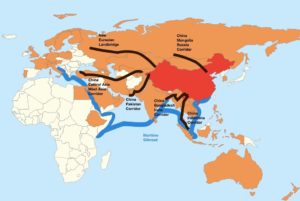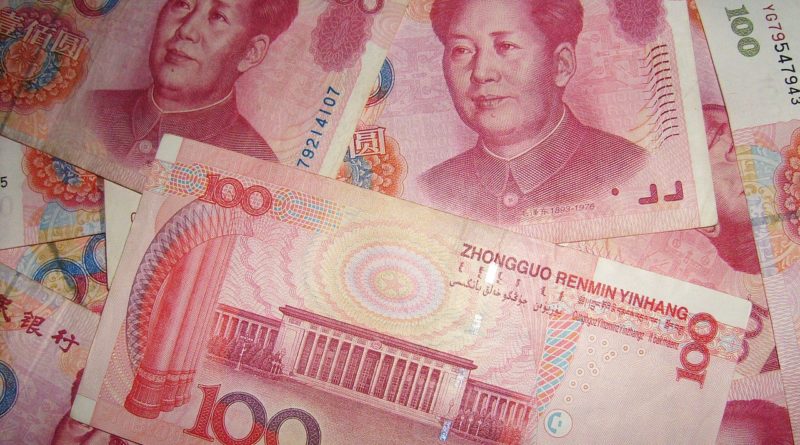One Belt, One Road: What Future?
Italy is ready to become the first G7 country to back China’s One Belt, One Road Initiative, triggering alarm and concerns in the White House and the European Union.
This month, Secretary General of the Chinese Communist Party and President of the People’s Republic of China, Xi Jinping, will meet Italian President Sergio Mattarella and Prime Minister Giuseppe Conte.
This meeting will take place after an EU summit, in Brussels, where leaders will discuss what kind of policy adopt to China’s EU investment.
Italy is ready to become the first G7 country to back China’s One Belt, One Road Initiative, also known as Belt and Road Initiative, triggering alarm and concerns in the White House and the European Union.
The meeting between the Italian and Chinese governments is now just around the corner.
By the end of March, Italy and China will be negotiating a memorandum that will be destined to ignite a number of different mindsets and concerns.
What are we talking about? Well, the meeting represents a significant – or critical, according to some – step toward what is now known as the Belt and Road Initiative.
China’s Belt and Road Initiative aims to build new global trade routes and infrastructure projects in more than 80 countries.
In fact, in the last few days medias have widely talked about the Belt and Road Initiative – commonly known as the New Silk Road – which is a strategic initiative of the People’s Republic of China launched in 2013 for the improvement of Eurasian trade links through land and sea routes.

Given these concerns, Italy, an historical and friendly partner of the United States, is planning to officially announce its support for China’s Belt and Road Initiative this month.
In this case, Italy would represent the first endorsement by a G-7 nation, which is not a joke!
In fact, Italy’s undersecretary in the economic development ministry, Michele Geraci, told the Financial Times his country is in negotiations to sign a memorandum of understanding in support of the program. An agreement that the Italian government should sign on the occasion of the visit to Rome of Xi Jinping, Secretary General of the Chinese Communist Party and President of the People’s Republic of China, by the end of March.
We want to make sure that ‘Made in Italy’ products can have more success in terms of export volume to China, which is the fastest-growing market in the world.”
The Italian Minister for Economic Affairs and Finance, Giovanni Tria, clarified that some principles of collaboration and economic-commercial cooperation are reaffirmed in the memorandum of understanding between Italy and China. According to him:
No trade and economic rules are changed, and it would not even be in the Italian possibilities, since international trade is a European competence. Having said that, perhaps we need to take in account some concerns.”
Anyway, how the new silk route really works?
Essentially, Beijing co-finances infrastructure useful to China through the Asian Infrastructure Investment Bank (AIIB), of which Italy is a founding partner, plus an ad hoc fund, the Silk Road Fund.
Clearly, if states do not refund their quotas, infrastructure become a property of the investors, a process similar to what is happening in Greece.
Italy is directly involved in the Belt and Road Initiative as a landing place in the Mediterranean for goods in transit to Northern Europe.
However, what appears to be a far-reaching initiative has raised many doubts, especially from Chinese activism.
In April 2018, 27 out of 28 EU ambassadors in China signed a report criticizing the methods of the Chinese Belt and Road Initiative.
The report harshly denounced the methods of the initiative, which could lead to a free trade ban to the benefit of Chinese companies in the absence of protection of human rights.
Moreover, another risk is that Beijing may demand developing nations to take on high debt burdens while benefiting Chinese companies, often state-owned.
As Evelyn Cheng denounced on CNBC:
Chinese President Xi Jinping’s regional infrastructure investment program is widely seen as Beijing’s attempt to expand its influence globally through the construction of a network of land and maritime routes across Asia, the Middle East, Africa and Europe.”
In the last few months, some countries such as Malaysia, Pakistan, Myanmar, Bangladesh and Sierra Leone have either rescinded or stepped back from their prior commitments to Belt and Road projects.
This setback occurred at a critical time in China’s relations with the United States and the European Union, of which Italy is a founding member.
Garrett Marquis, White House National Security Council spokesperson, told the Financial Times:
The U.S. is skeptical of the benefits to Italy from an endorsement of the Chinese initiative, and urged allies and partners to increase the pressure on Beijing to align its global investments with international practices.”
Particularly, the United States has expressed deep concerns over China’s “infrastructure diplomacy” and called on Italy’s coalition government to reconsider Italian support to BRI.
As Garrett Marquis posited:
We are skeptical that the Italian government’s endorsement will bring any sustained economic benefits to the Italian people, and it may end up harming Italy’s global reputation in the long run.”
In fact, Italy’s support for the Belt and Road Initiative could damage Brussels’ plans to overcome EU divisions over how to manage Chinese investment and possible negative effects on the EU free trade policy.
Certainly, we are at a turning point in history where the Belt and Road initiative risks marking the already precarious balance of relations between Italy and China with the United States and the European Union.
_______________________________________________________________________________________________________________
Video: What is China’s New Silk Road? from the YouTube Channel of the World Economic Forum




